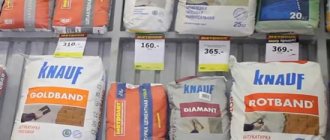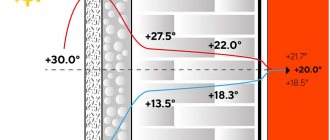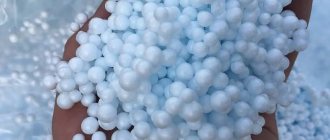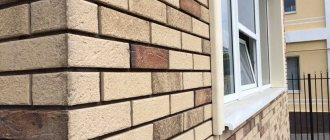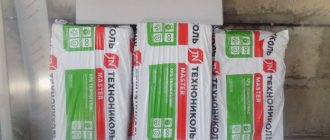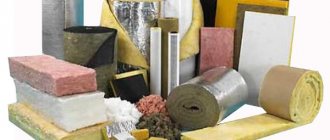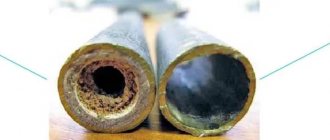Most often, construction and finishing work is carried out in the summer. However, insulating the outside of the house in winter is possible. In this case, it is necessary to comply with a number of rules and requirements. When choosing a material, first of all, pay attention to resistance to high humidity and temperature changes.
Insulation can protect your home from the cold and reduce the cost of heating the premises.
Advantages and disadvantages of the process in winter
Insulation in the cold season is faster. You don't have to wait long for the walls to dry. In winter, the dew point moves outside, so moisture does not accumulate in the thickness of the frame or masonry. The disadvantages of such insulation include:
- the difficulty of performing work due to high air humidity;
- impossibility of using some materials.
The disadvantages of insulation in the cold season include the difficulty of performing the work.
What not to insulate window frames
The simplest and most well-known options are to cover the windows with film or seal them with adhesive tape for covering windows. These methods will certainly help in maintaining heat, but more and more summer residents are abandoning them. There are several reasons.
Disadvantages of window film:
- Nails need to be driven into the frame every year. Each nail leaves a mark and therefore damages the wooden frame.
- The film completely blocks your view and “cuts off” you from the outside world for the entire winter.
- Even light, transparent tulle hanging on a window reduces the amount of light entering the room. The lack of light from the film will be felt even more strongly, especially if you remember that winter is not the sunniest time of the year anyway.
Disadvantages of adhesive tape for covering windows:
- Every spring you will have to peel off, and in some places even tear off the tape from the frame. The paint will come off along with it (although the manufacturers promise easy and safe peeling off). This means that every spring you will have to repaint all the window frames.
- The cost of adhesive tape is much higher than its paper counterpart. And since this material, unlike film, can only be used once, it’s not exactly a cheap pleasure, especially if there are many windows in the house.
Material selection and characteristics
Manufacturers offer many types of insulation. When choosing, you need to consider that the material should:
- have low thermal conductivity;
- suppress noise coming from the street;
- be safe for humans and nature;
- extinguish independently in case of fire;
- It is easy to pass air in both directions;
- resist the spread of pathogenic microorganisms;
- do not absorb water.
Mineral wool
Due to the fibrous structure of the boards, air passes through. At the same time, mineral wool creates a barrier that prevents heat from escaping into the surrounding space. It can be used for both external and internal insulation. The main disadvantage is the complexity of installation. To lay mineral wool, you need to build a frame.
Mineral wool is a convenient material for insulation.
Glass wool
The material is supplied in rolls or slabs. Glass wool contains small particles that irritate human skin. Therefore, when working, you need to use protective equipment - work suits, gloves.
The insulation does not ignite in a fire, so it can be used for interior work. Installation also requires the creation of a wooden frame.
Cellulose
The main advantages of such a heat insulator are:
- multifunctionality;
- safety for humans and the environment.
Cellulose insulation is an ideal option for residential buildings.
The insulation does not accumulate moisture, which prevents the formation of mold. Manufacturers impregnate cellulose with antiseptic compounds and fire retardants to prevent fire.
Styrofoam
The inexpensive material is often used for insulating facades. Polystyrene foam is lightweight and pathogenic microorganisms cannot multiply on its surface. To install the slabs, special glue is used. However, in winter, such compounds take longer to harden.
Expanded polystyrene
Despite its high strength, the insulation easily allows steam and air to pass through. The coating goes well with facade tiles, plaster, and siding. Polystyrene is not used in combination with organic compounds and resins. Installation of the material is carried out using the “wet facade” technology.
Expanded polystyrene is a modern insulation material.
Fibrolite
The material is obtained by pressing wood shavings. To improve performance characteristics, a binding component is added - magnesium salts or Portland cement. Fibrolite is easy to install; just fix the boards with self-tapping screws.
Cork material
The presence of a large number of pores allows the cork to retain heat. The material is resistant to damage and is not subject to significant shrinkage. The decorative properties of cork allow it to be used for finishing and insulating rooms. The slabs are not susceptible to rotting and mold, and do not emit harmful substances when burned. The main disadvantage is the high price.
Cork material is a natural insulation material.
Liquid insulation
Thermal insulation impregnation is a modern material that allows you to work in hard-to-reach places. When covering a house with liquid compounds, the construction of a frame is not required. Application is carried out using special tools.
Preparatory work
If electrical wiring runs along the walls, it must be checked to ensure that it is in working order and properly insulated. Before directly installing the insulation material, you need to create some kind of vapor barrier to protect the insulation from moisture that will form on the wooden walls. Also here we must not forget about high-quality ventilation, without which, when creating a vapor barrier, a thermos effect will be formed and the walls will rot.
Note: A special membrane film can be used as a vapor barrier. It does its job very well, but is not cheap.
Options and step-by-step instructions for insulating a house outside in winter
When using any method of thermal insulation of a building, work begins with the creation of a protective circuit that increases the air temperature to acceptable values. A durable film is stretched around the building sheets to trap cold air. Powerful heaters are placed inside the circuit.
Dry method
The use of this method in winter is preferable. Plastic dowels are used to install foam boards. Materials containing water are not used in this case. The work order includes:
- cleaning and leveling the facade;
- installation of sheathing made of wooden bars or metal profiles;
- laying insulation;
- installation of a waterproofing membrane;
- finishing of the facade.
“Dry” insulation is a universal method of thermal insulation.
Wet facade
External insulation of a house using this technology is performed as follows:
- Clean the walls from old insulation and cladding. Eliminates pronounced irregularities.
- Prepare the adhesive composition. To do this, gradually add the dry ingredients into the water and stir the solution thoroughly. Apply the mixture to the foam board, leaving gaps.
- Apply the elements to the walls, starting from the corner. The panels are pressed tightly, after which they are additionally fixed with special dowels.
- Apply a second layer of adhesive. A reinforcing mesh is installed on top, which is necessary to form the finishing coating. The material is laid with a slight overlap, pressing into the solution.
- Wait for the composition to harden, maintaining a positive temperature inside the thermal circuit.
- Apply plaster or other decorative coating.
Mistakes that are made when insulating wooden walls
When independently carrying out facing work and pre-insulating a wooden house, mistakes are often made, which we will consider below. The result is ineffective insulation, dampness in the house, destruction of wood and loss of its performance properties. The following 7 errors can be considered typical - they occur most often.
No. 1: installation of insulation without wood preparation
Old log houses are often subject to external insulation. Over the years, the log house has undergone final shrinkage, and its parameters will no longer change, which means they will not affect the front finish
But it is important to understand that the years of wood exploitation “in the open air” could not pass without a trace
Due to the fact that the insulation and sheathing will completely cover the walls, before starting work it is necessary to inspect the enclosing structures in order to identify weak areas that need to be repaired and treated. It is necessary to treat the wood with antiseptics and anti-feathers
It is important not to leave untreated areas. The solution should be applied 2-3 times
Each layer must dry completely. Insulation should begin when the wood is dry.
In order for wood to last a long time without being subject to biological decomposition or damage, it should be treated with a special antiseptic impregnation
No. 2: neglecting caulk
To prevent the log house from being blown through, use caulk. At the same time, the insulation of the structure is ensured. When inspecting walls before insulation, it is necessary to carefully inspect all areas where caulk is used - whether it sticks out, how tightly it is held. It happens that protruding, loosely twisted material is pulled apart by birds.
Insulation caulk
No. 3: wrong side selected
Log houses are insulated exclusively from the outside. This is a rule that must be strictly followed. Only this method allows you to ensure the correct use of wood and thermal insulation material. If you choose the other side and fix the insulation inside the house, then both the wood and the insulation will get wet. As a result, disruption of the microclimate in residential premises and increased humidity.
Log houses are insulated exclusively from the outside
No. 4: the insulation is incorrectly selected
The construction market offers insulating materials in a wide range of prices and performance characteristics. Of all the variety, however, only a few are suitable for insulating wooden houses: mineral wool (basalt and glass), as well as extruded polystyrene foam. The latter has excellent performance, except that when melted it releases substances that are extremely dangerous to humans. Therefore, the only alternative for insulating a wooden house is mineral wool.
One of the best insulation materials is mineral wool.
No. 5: improper transportation and storage of insulation
When purchasing, it is important to check the tightness of the heat insulator packaging. It must not be damaged and the contents must be dry.
If the insulation gets wet, its thermal insulation properties will decrease significantly. It is recommended to remove the insulation from the packaging one day before installation. And after it is fixed to the wall, it is necessary to immediately continue working on the walls so that the insulation does not remain “open”.
Check the material carefully before purchasing
No. 6: using roll insulation instead of slab insulation
Mineral wool works best for insulating wooden walls. You can find slabs and rolled material on sale. Why are mats not recommended? Because, being in a vertical position, over time the insulation will inevitably sag and gaps will appear through which cold air will rush into the house. The slab insulation maintains its shape throughout its entire service life, does not deform or sag.
The slab insulation maintains its shape throughout its entire service life.
No. 7: Incorrect calculations
Too thick or thin a layer of insulation will cause disruption of the microclimate in the room. Typically, the heat insulation is laid in two layers of 5 cm. In the south, one layer is enough, and in the north, three are required.
Correct calculations will allow you to maintain the correct microclimate in the room
How to work with a ventilated facade
In this case, external wall insulation in autumn or winter is performed as follows:
- Install vertical sheathing bars. The distance between the elements should not exceed 30 cm. The beams are secured with dowels. The aesthetics of the finished coating depends on the quality of installation of the lathing.
- The selected heat insulator, for example basalt wool, is placed between the beams. Each canvas is secured with umbrella dowels. There must be at least 2 fasteners per slab. A vapor barrier is not installed between the base and the insulation.
- Cover the façade with wind-protecting fabric. This prevents moisture from entering the thickness of the insulation without reducing the vapor permeability of the wall pie. The fabric is fixed to the beams with construction staples.
- The outer layer of the sheathing is formed. This is done to create a ventilation gap. At this stage, the wooden sheathing can be replaced with metal profiles.
- Install decorative covering elements.
The ventilated façade is a universal multi-layer insulation system.
This method of insulation is used in any weather, including autumn and winter.
Budget-friendly methods for eliminating drafts
Some of the listed methods are familiar to everyone since childhood. Others can be called modern: they are considered more reliable, such technologies help solve the problem for several years at once. If the room is very cold, you will most likely have to combine several methods.
Newspapers and paper
This is the cheapest (and sometimes free) and elementary method of insulation. There are several variations of its use.
- Newspapers or paper are rolled into thin tubes, moistened and pushed into the cracks.
- The leaves are torn into small pieces and soaked in water to make a paste. It covers up the gaps.
- Several newspaper scraps are mixed with a glass of flour, two glasses of chalk and water until it becomes sour cream. The mixture is then used as putty.
- Paper (preferably white) is cut into strips 4-5 cm wide and glued to a soap solution in places from which it blows. Masking tape is used for the same purposes.
The method has disadvantages. Paper strips glued to wood are difficult to clean and sometimes come off along with the paint. The second problem is that you can only open the window for ventilation.
Wool and fabric
Another insulation for wooden windows, known for many years. Technical wool is pushed into the cracks with a sharp object. In principle, you can use any rags you have at home. The fabric needs to be cut into strips 4-5 cm wide, wet, soaped, lightly wrung out and sealed all the gaps. The advantage of this method is that the fabric does not turn yellow like paper and easily comes off the frame. It will be just as easy to get cotton wool when spring comes. The only, but significant, drawback is that you won’t be able to open the window or you’ll have to do it all over again.
Film
A new way to seal a room, which is easy to do yourself. It will require a transparent polyester film. It serves as an additional air gap between the room and the street, transmits light well and is almost invisible. To create this heat vacuum, you will need clear double-sided tape, a knife or scissors, a long ruler, gloves, a marker and a tape measure.
How to insulate wooden windows for the winter using film:
- Wash, dry and degrease the entire structure, including the frame and glass.
- If gaps have formed in the sashes, seal them. This is important, as you will reduce heat loss to a minimum.
- Place tape around the perimeter of the frame.
- Measure its length and width.
- Place silica gel or other moisture-absorbing filler under the bottom bead. This is necessary to prevent condensation.
- Lay out the film on the table. If it is double, first divide it into layers.
- Measure the required amount and cut to a tolerance of 1.5-2 cm.
- Remove the protective strip from the tape.
- Apply the film to the top of the frame and glue it in place.
- Gently press the material against the vertical sides and secure it at the bottom.
It is better to do all the work with cotton gloves so as not to leave greasy marks. Do not pull the film too tight. But at the same time, do not allow it to bend towards the glass. Wrinkles can be smoothed out with a hairdryer without bringing it close to the surface. This method will help make the apartment warmer, but to achieve full results it must be combined with other methods.
Foam rubber, linen and sealing cords
It is not difficult to insulate windows with these fillers, and their efficiency is high. Foam tape with an adhesive backing is inexpensive and you can find it in any hardware store. With its help you can seal large cracks for 2-3 years. At the same time, you can ventilate the apartment not only through the window. The strip is glued around the perimeter of the sashes. Paper tape is glued to the top of it.
Linen cords are fixed to the surface in the same way as foam rubber, but with the help of nails or glue. The downside of this method is that when warm weather arrives, you will have to put in a lot of effort to remove such insulation.
Photo: Instagram @okno_ekb
Photo: Instagram @too_pillaris
Sealing cords are made from rubber, PVC, polyurethane and polyethylene foam. The most budget option is polyvinyl chloride and rubber seals, but in severe frosts they crack and break. There are also several forms of such a product on sale. Each of them is designed for gaps of different sizes.
- P-shaped - for medium ones.
- D-shaped - for big ones.
- E-shaped - for little ones.
The last two types of products are suitable for wooden frames. The installation principle is the same as with foam rubber. The difference is that some seals do not have an adhesive side and you need to buy glue or sealant separately. Another technical feature of the material is that it cannot be used to seal holes at temperatures below -10°.
Sealant and polyurethane foam
The last of 5 budget ways to insulate wooden windows. The sealant is ideal for sealing holes between wood and glass. At the same time, it is important to carefully select products in the store so that the dried glue remains transparent and does not turn brown.
Procedure
- Remove the glazing beads - thin parts that secure the glass. First pull out the bottom rail, then the side rails and finally the top rail. Elements may break, so stock up on new ones for replacement.
- Clean the groove from debris and grease, dry it and squeeze the sealant into it.
- Reinsert the glass and glazing beads.
You can coat the cracks on top without removing the glass. The temperature outside during work should be no lower than +5 degrees. In addition to silicone, the following are suitable for the same purposes:
- Paraffin. Heat it to a liquid state, pour it into the syringe and close the slots.
- Wood putty.
- A mixture of plaster and chalk. Mix them in a 2:1 ratio and dilute with water until the consistency of the putty becomes viscous.
Polyurethane foam is used to cover large gaps near slopes, frames, and window sills. The surface on which the foam is applied is prepared, moistened with water and the composition is applied in zigzags. Before use, the container must be shaken well and turned over for a few seconds.
A few rules:
- It is more convenient to blow with foam at positive temperatures.
- The frozen composition increases in size, so the holes are filled only ⅓.
- It is better to start sealing from the bottom.
After the layer of polyurethane foam has dried, all excess is cut off. The result will not look very aesthetically pleasing and can be covered with something, for example, gypsum putty, the proportions of which we gave a little higher. This is also necessary because the foamed seam cracks under the sun's rays.
Stores sell professional and household foams. The second option is suitable for your purposes. It can be applied without a special gun.
Both sealant and foam are good because they block drafts for a long time and reduce heat loss in the apartment. Both materials are easy to apply. The only caveat is that it’s better to do this with construction gloves and clothes that you don’t mind. This is especially true for polyurethane foam - it is not easy to clean and wash it.
- Window
How to install wooden slopes: instructions for 2 methods of fastening
Insulation of the facade of a wooden house
The log house is subject to rotting at high humidity. Therefore, wooden buildings require not only thermal insulation, but also protection from atmospheric factors. If insulation is carried out in winter, take into account the following points:
- foam boards must be treated with protective compounds to prevent destruction;
- “wet” technology can only be used if a thermal circuit is formed;
- You can begin finishing the facade of a wooden house after complete shrinkage, which takes 3-5 years.
Insulating boards must allow air to pass through easily, be resistant to moisture, and retain heat. It is best to choose mineral wool, polystyrene foam or polyurethane foam. Warming is done as follows:
- Treat the walls with antiseptic compounds. Lay a waterproofing layer.
- A sheathing is formed from thick timber. The voids are covered with insulation, which is secured with dowels.
- Cover the structure with a vapor barrier membrane. A metal mesh is installed to protect the house from rodents.
- Assemble the frame for the facing layer. Install clapboard or siding.
Window putty
Paper or window putty is an affordable and quick method. To work you will need old newspapers or paper, water and two parts of crushed chalk or part of clay.
Grind the newspapers, mix the components and as a result you get a viscous, plastic mass that can be used to seal any, even the smallest and narrowest, cracks and gaps. For aesthetics, the putty is covered with decorative elements on top.
You can buy ready-made construction putty. This is a rather labor-intensive process, since before starting it is necessary to remove the old putty, then apply new material, level it, if necessary, close it with a bead and paint.
After the procedure, the window can be easily cleaned of putty. In addition, the product does not absorb moisture. However, the effect will only last for one season. In addition, the putty prevents the window frames from opening. Therefore, with the onset of warm weather, the product is removed and the windows are thoroughly washed. Before next winter, to prevent the wind, you will have to seal the frames again.
Features of insulating a loggia in winter
First, the balcony needs to be glazed. Double-glazed windows are considered a profitable option. Insulation work is carried out as follows:
- All seams are covered with foam, especially carefully treating the gap between the wall and the window sill. After this, the sheathing is fixed, and foam plastic slabs are inserted between the bars.
- A waterproofing coating is formed from foam rubber or other material.
- Finishing is done with siding or clapboard.
An insulated loggia becomes a comfortable room for relaxing or storing things.
Other window sealing products
The sealant will be a real salvation if there is strong wind from the windows. The sealant is applied to the areas where the glass meets the frame. Window frames must be washed, degreased, and then carefully applied. To make the seam as airtight and aesthetically pleasing as possible, squeeze out the compound with even pressure and distribution; Paraffin is used to insulate wooden frames. The product only eliminates blowing through the pores of the wood. For the procedure, melt the paraffin and glue the surface of the valves with the mixture. This is a budget but labor-intensive method. In addition, it does not eliminate drafts around the perimeter of the glass and frame; Thermal-saving film is a popular and affordable material for covering windows. It not only covers the areas where the glass and frame meet, but also reflects the resulting heat. This increases the thermal insulation of the room and reduces heat loss by 75%
It is important to glue the material correctly, without folds or air bubbles. You can easily apply the film yourself, but it is quite expensive; Oddly enough, washing the window glass and thick long curtains will help to insulate the windows
Clean double-glazed windows allow sunlight to pass through as efficiently as possible, which will heat the room. And thick and long curtains will retain heat inside the room; Electric heating of windows and double-glazed windows is another modern and expensive way to reduce heat loss. In the first case, a heating cable is installed around the window. In addition, you can install ready-made double-glazed windows with heated glass, which will be heated from the inside.
Types of fabric
Like all cotton knitted fabrics, natural capitonium can be divided into three types according to the quality of the material:
- Peña. High quality fabric, 100% cotton. Long fiber raw materials are used for production. This material holds its shape better and has a smooth, shiny surface.
- Card. The fabric is of average quality. The raw material is medium length cotton fibers. The surface of the material is smooth, not too different in appearance from foam, but shine is often absent.
- Openend. The fabric is of low quality, but still natural. The basis for such material is taken from short fibers of raw materials and residues from the production of peña and carde. The surface of the fabric is matte, may be covered with barely noticeable lint, and the material shrinks after washing.
The base composition can include both pure cotton and synthetic fibers. Most often, polyester is combined with cotton. Its content should not exceed 1/3. A large number of artificial components reduces the quality of the material several times and negates its environmental friendliness and breathability.
Sometimes the internal partition in the material, to reduce cost, is made entirely of polyester or other synthetic fabrics, and the external ones are made of cotton. It will not be possible to determine this visually, but air circulation is disrupted, so the body will not “breathe.” Naturally, such material is not suitable for children's things.
Oil varnishes
Oil varnish can be used to apply to stones and other plaster products. It is made from artificial resins and special herbal additives and has an oily texture. After drying, a protective layer is formed that protects the surface from harmful effects and various damaging factors.
They produce glossy and matte oil-based varnish for plaster. A special solvent is used to dilute it. To make this varnish with any shade, you can purchase a special tint material that will give the stone or tile an attractive, original shade
It is important to consider that oil varnish darkens a little after drying.
